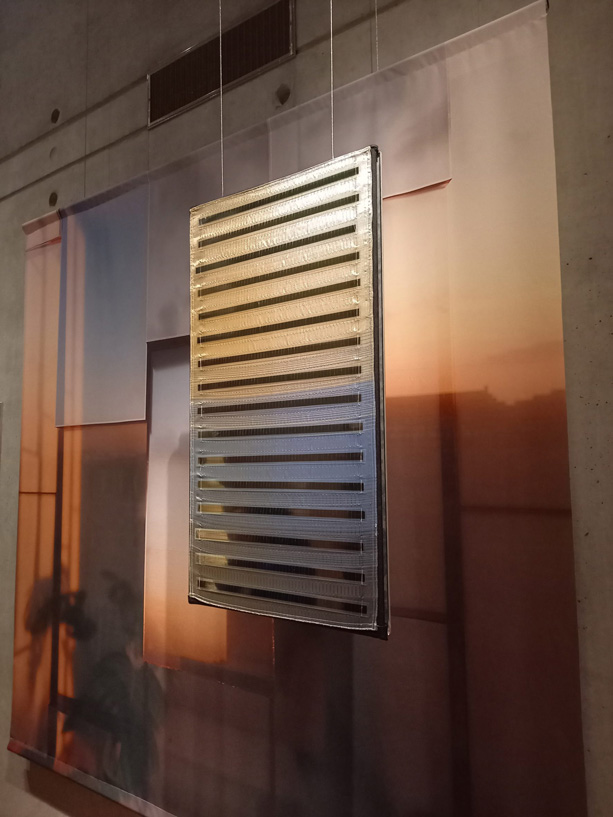
Designer Pauline van Dongen is reportedly developing a new material power packed with renewable energy which can be easily woven into our everyday lives. A solar textile named Suntex is in the making by the Dutch designer which is suitable for lightweight architectural constructions. Scroll down to read more on SURFACES REPORTER (SR).
 The textile will be woven with flexible organic solar panels (organic photovoltaic solar cells) that are made from polymer with recycled polymer yarns.
The textile will be woven with flexible organic solar panels (organic photovoltaic solar cells) that are made from polymer with recycled polymer yarns.
Van Dongen recently unveiled her idea to reupholster our built environment with the help of a solar-energy-generating textile. In close collaboration with manufacturer Tentech, she is developing Suntex which aims to combine the tactility and design freedom of a textile with the energy-generating potential of solar technology.
The textile will be woven with flexible organic solar panels (organic photovoltaic solar cells) that are made from polymer with recycled polymer yarns sourced from fabric producer Morssinkhof Sustainable Products. Its circuitry will also offer aesthetically pleasing looks for the solar technology through its subtly mesmerizing colours, patterns and textures. Suntex is expected to generate possibilities in the creation of large tents, textile structures such as curtains, parasols and swimming pool covers, and facades that harvest solar energy alongside providing sun shading.
 The solar textile is reportedly durable and water-resistant and has the potential of turning an entire building into a solar energy generator by acting as a cladding.
The solar textile is reportedly durable and water-resistant and has the potential of turning an entire building into a solar energy generator by acting as a cladding.
The solar textile is reportedly durable and water-resistant and has the potential of turning an entire building into a solar energy generator by acting as a cladding. According to Van Dongen, the entire façade can be dressed in this fabric. She introduced the new material at The Solar Seminar, Rotterdam as a part of The Solar Biennale. Suntex reportedly requires less embodied carbon to manufacture as compared to other building materials that are there in the market. Its lightweight plays a crucial role in making it have a lower carbon footprint.
Image credits: Pauline van Dongen